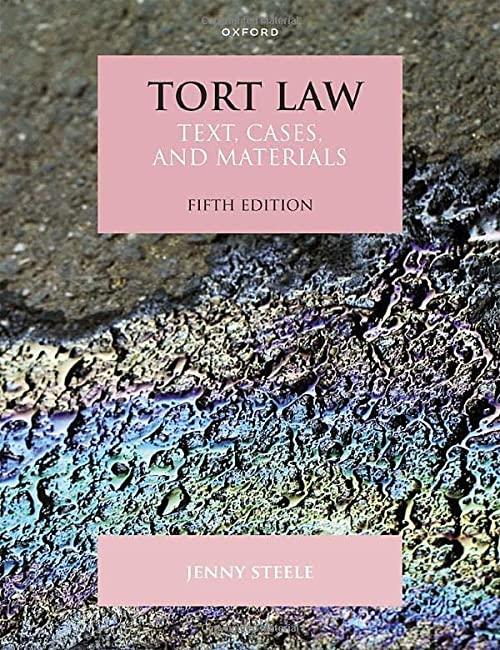Answered step by step
Verified Expert Solution
Question
1 Approved Answer
Specific performance refers to a case in which the court supervises the estates of deceased persons. an order by a court to apply the provisions
- Specific performance refers to
- a case in which the court supervises the estates of deceased persons.
- an order by a court to apply the provisions of a statute.
- an order by the Supreme Court of Canada to carry out a binding obligation.
- an order in the law of Equity to actually carry out a binding obligation.
- a case sent back by the appeal court for retrial by the lower court.
2.The party who begins action against another party is known as
- an appellant.
- a respondent.
- a plaintiff.
- a defendant.
- counsel.
3.The discoverability rule for limitation periods means that
- the limitation period starts from the time the claim is discovered, even if that is later than the time when the claim arose, subject in some jurisdictions to a later, ultimate (final) limitation period.
- defendants are always liable to pay for losses after the plaintiff discovers the right to sue, even if that occurs far in the future.
- plaintiffs need not take any steps to discover their rights to sue.
- a limitation period may be extended by a judge provided any prejudice (harm) to the defendant can be compensated with an order for court costs or granting the defendant an adjournment.
- the defendant must discover the claim before an action can be commenced by the plaintiff.
4.An administrative tribunal is
- an administrative agency that supports the declarations of the judicial branch.
- a legislative subcommittee that creates new laws in a specific area.
- a panel created to prevent judicial review of executive decisions.
- a court designed to handle minor regulatory infractions.
- a regulatory body set up to implement and enforce designated government laws and regulations.
5.An error of law by an administrative tribunal means
- the tribunal did not understand a detail of the facts of the case although the misunderstanding was a minor part of the case.
- the tribunal made a decision based on a misinterpretation of the facts.
- the official record of the tribunal shows the tribunal made a serious misapprehension of the law in making its decision.
- a member of the media reported in a newspaper an incorrect legal position said by one of the participants in the hearing.
- the lawyer misread a case when preparing for the hearing.
6.what of the following reasons is not one that allows the decision of a regulatory body to be set aside?
- The regulation on which the decision was based infringes on the freedom of the press.
- The provincial statute creating the body went beyond the powers granted to provincial government.
- A person thinks the decision of the body was unfair.
- The enacting statute discriminates on the basis of race.
- The decision of the body violates the participant's freedom of religion.
Step by Step Solution
There are 3 Steps involved in it
Step: 1

Get Instant Access to Expert-Tailored Solutions
See step-by-step solutions with expert insights and AI powered tools for academic success
Step: 2

Step: 3

Ace Your Homework with AI
Get the answers you need in no time with our AI-driven, step-by-step assistance
Get Started


